“2021 Arids”: the birth of a new meteor shower
What are “Arids”?
From several theoretical works by different teams (among which IMCCE) an international observation campaign was organised in October 2021 to witness the birth of a new meteor shower (an extremely rare event).
Comet 15P/Finlay, discovered in 1886, showed an exceptional outburst in 2014, releasing a myriad of cometary grains called meteoroids. Each comet perihelion passage is accompanied by the ejection of gaz and dust in the Solar system. In case of such an outburst, the amount of meteoroids is much larger than usual. They later evolved independently from their parent comet, and are organised as gigantic streams, distorted by Jupiter gravitational perturbations. When the Earth enters such stream, each and every meteoroid entering the atmosphere causes a meteor, seeming to come from a particular point in the sky: the radiant. The shower is named after the constellation where the radiant is located.
The Arids case is exceptional! Although comet 15P/Finlay has generated many meteoroid trails in the past, none had ever encountered the Earth until the perturbation by Jupiter brought them in the path of our planet. Thus, this is nothing less than the birth of a new meteor shower (an exceptionally rare event) that happened in October 2021! Moreover, the encountered meteoroids were ejected in 2008 and 2014, i.e. in part during the exceptional outburst of the comet. The amount of expected meteoroid entering our atmosphere was therefore very large.
The radiant associated to the meteors caused by meteoroids ejected by comet 15P/Finlay is located in the Ara constellation, hence the shower name: Arids.
The forecasts
The art of forecasting meteor showers often implies parallel computations. The results (including ours) showed that the Earth would enter 3 times in the meteoroid streams, at the following dates: 29th Sept. at 8 h 25 min UT, 7th Oct. at 0 h 35 UT and at 3 h 55 UT. If these timings can be confidently determined, the amount of visible meteors is a much harder problem to tackle. For the Arids, the complete absence of past showers make the endeavour even more complicated, in addition to a very low atmospheric entry velocity (10.8 km/s) causing dimmer than usual meteors. Theoretical results were therefore highly uncertain. The orbital configuration of the 3rd peak is illustrated below.
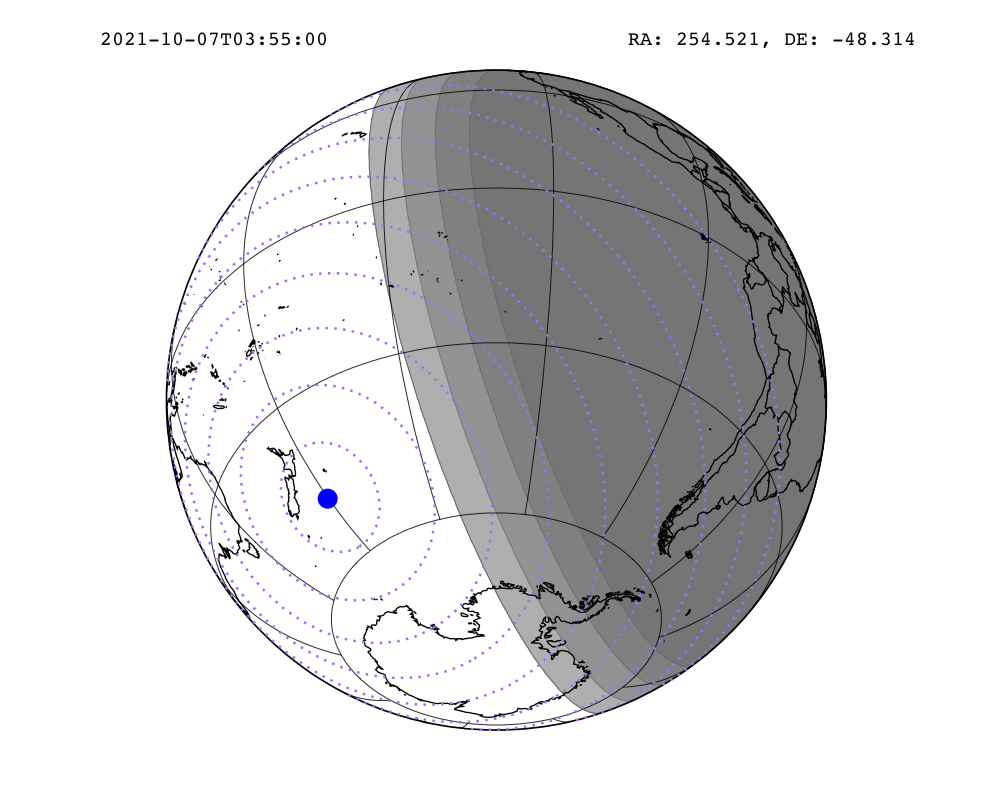
The observation campaign
In order to optimise the mobile observation of meteor shower outburst nearly anywhere on the Earth, IMCCE and GEPI (F. Bouley, G. Fasola, Y. Younes) from Paris Observatory (PSL) have designed and built two “MoMet” suitcases, each including 5 meteor dedicated cameras. The MoMET project PI is J. Vaubaillon (IMCCE). The hardware includes IMX174-based cameras (Basler and DMK), controlled with Odroid XU4Q or Raspberry Pi 4 minicomputers. The software for the acquisition and meteor detection is RMS (developed by the Global Meteor Network), especially tuned for Raspberry Pi. The adaptation to Odroid as well as the interface allowing the user to control the 5 cameras at once was developed by P. Da Fonseca (EPITECH, during an internship at IMCCE). Many observation test campaigns benefited from the crucial help by K. Baillié (IMCCE), J. Desmars (IMCCE/IPSA) and S. Bouquillon (SYRTE/LFCA).
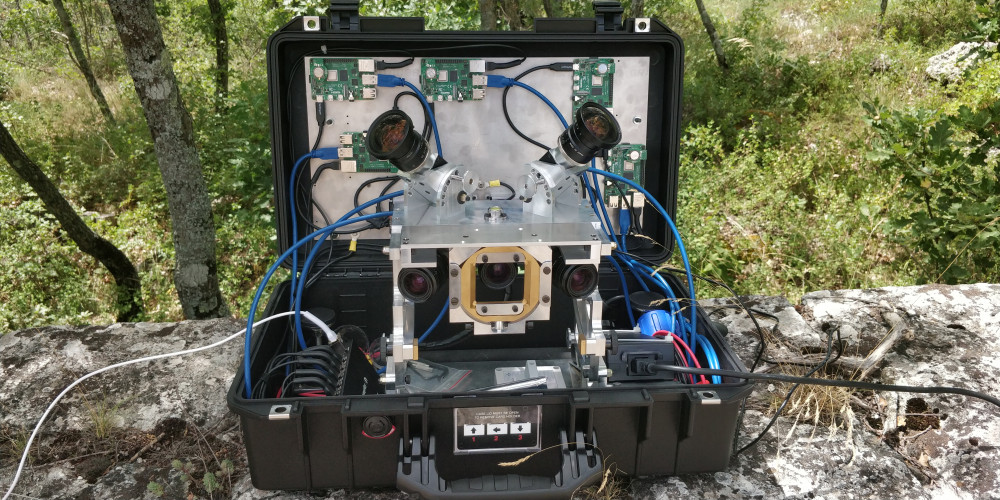
.jpg)
The observation campaign involved an international team and took place in Chile. Participants were P. Da Fonseca (IMCCE), S. Bouquillon (SYRTE/LFCA), R. Mendez & F. Gutierez (U. Chile), J.L. Nilo & P. Vera (U. de La Serena), A. Jordan, V. Suc (El Sauce Obs.). They splitted in 2 teams located at 2 stations distant from ~50 km, in order to triangulate the meteors and deduced their 3D-trajectory and orbit): one at Falcon site (Mamalluca) and the second at ObsTech/El Sauce observatory. The MoMET suitcases were sent to Chile thanks to CNRS / ULISSE service (F. Picchiottino).

.jpg)
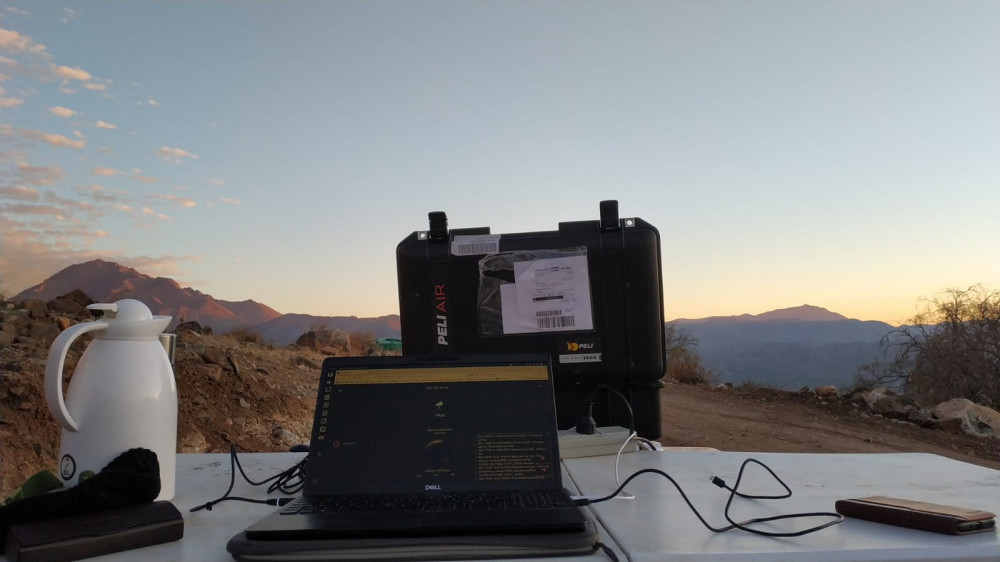
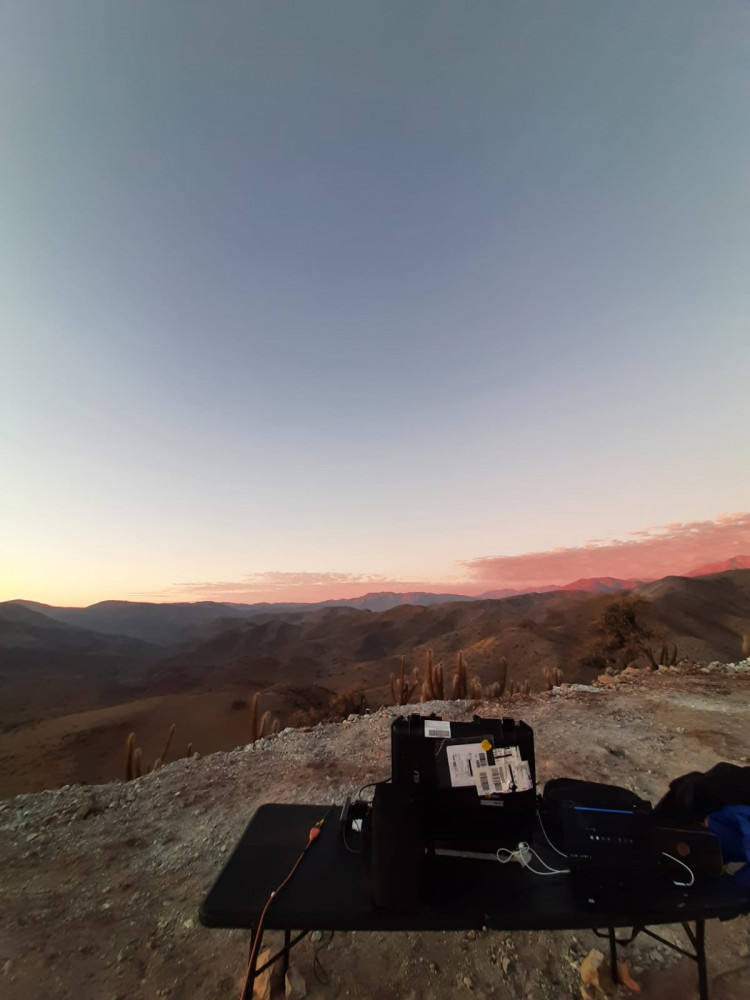
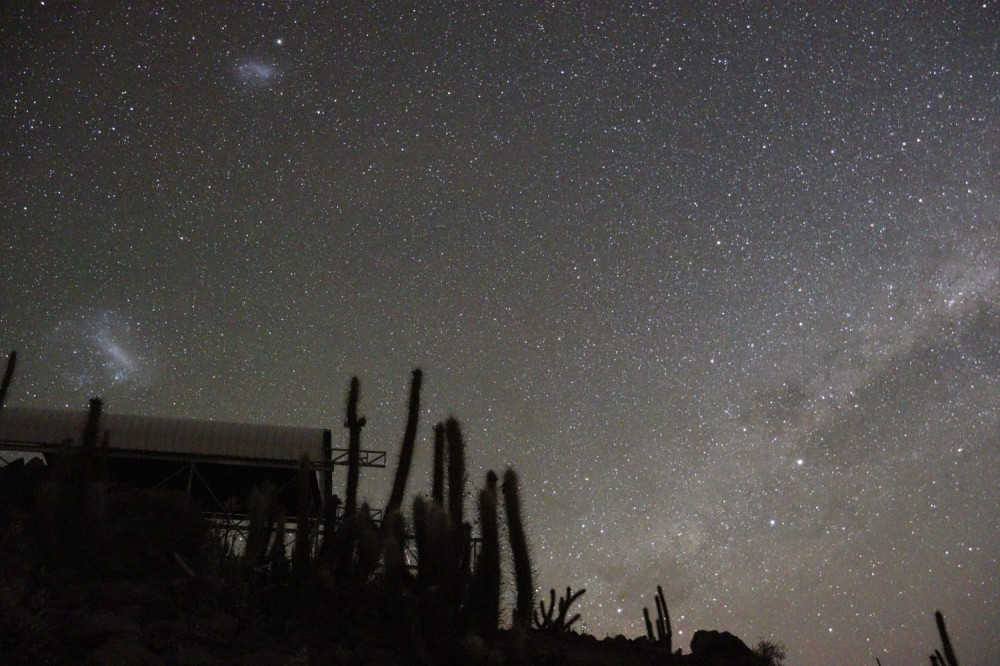
Results
The very first peak was detected by meteor cameras of the CAMS network in New Zealand in particular. See also this report.
Clouds were interfering with observations during the 2nd peak. The level of the shower seemed less than expected. Pablo Vera (U. de La Serena) reported visually seeing 35 meteors coming from Ara, at El Sauce observatory, between 0 h 28 and 1 h 30 UT. Most were faint, and a few were bright. During the expected 3rd peak, he noticed: “only a few”.
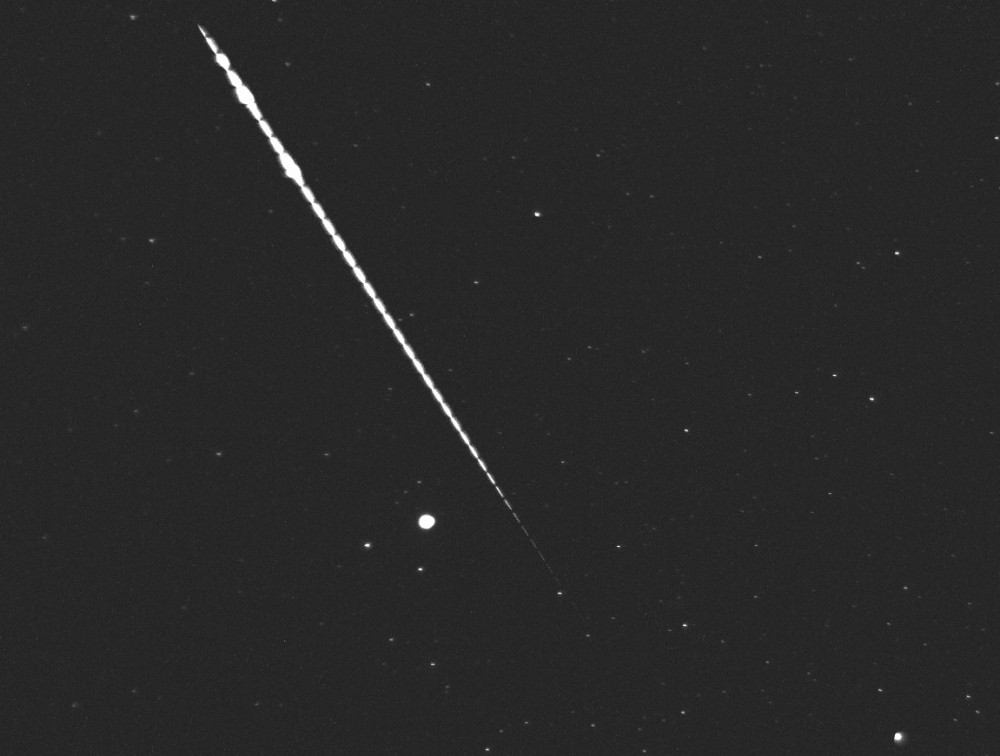
Juraj Toth (U. Bratislava, Slovakia) and P. Jenniskens (SETI) are both reporting that in spite of the partly cloudy weather, their cameras have detected some Arids meteors.
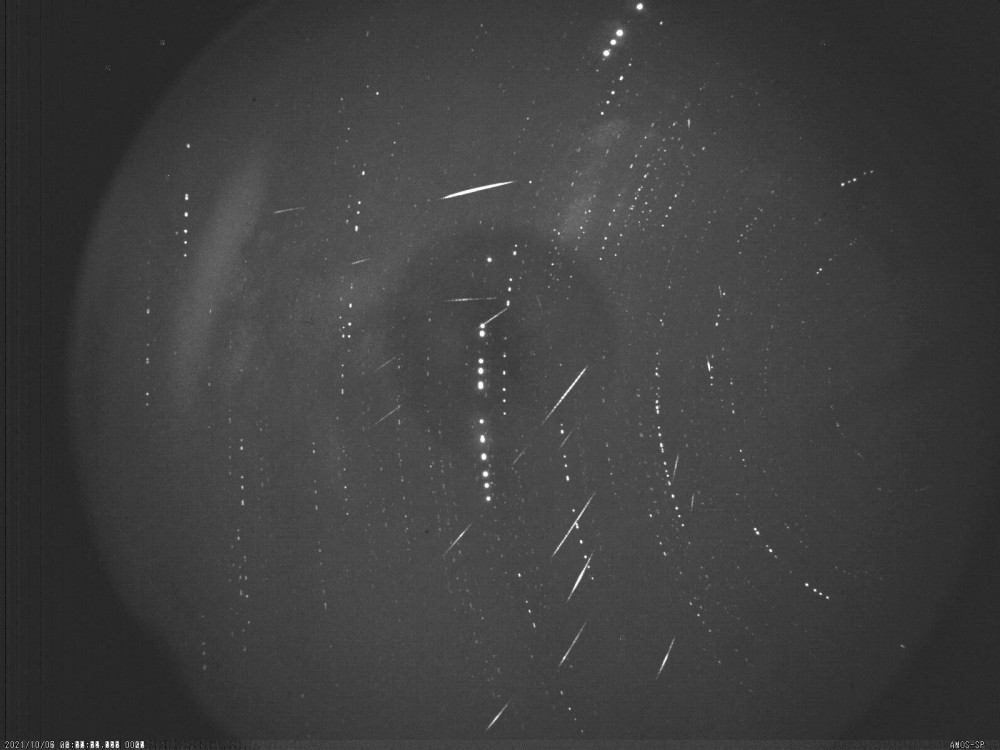
Hiroshi Ogawa from Japan reports that radio observations might have caught the outburst as well, from calculations by Hirofumi Sugimoto. Their preliminary estimate is ZHR ~80/hr, which is close enough from the expected value.
The CMOR II meteor radar located in Ontario, Canada and run by the Western Meteor Group clearly detected the shower peak as well:
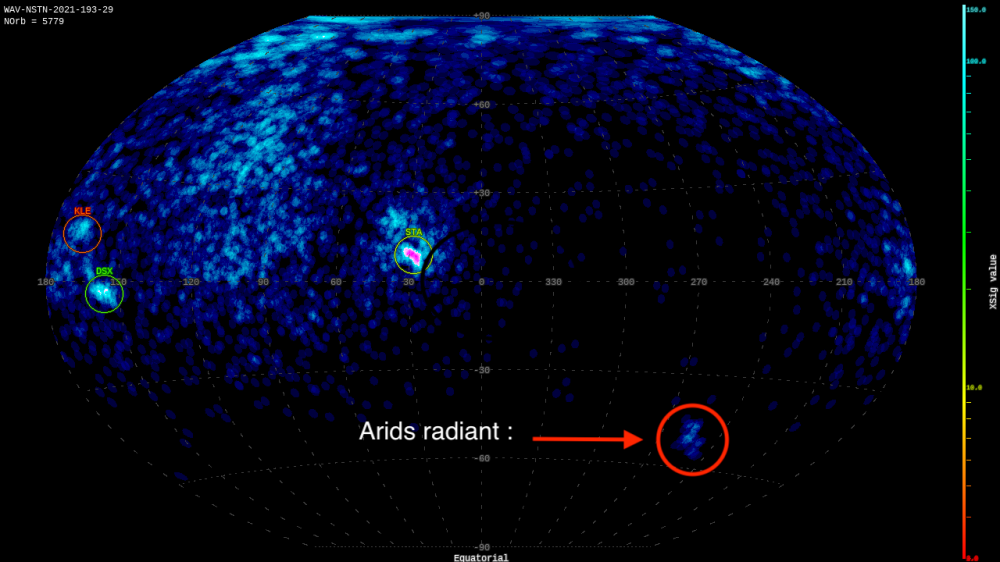
Analysis
The Arids meteor shower caused by comet 15P/Finlay definitely showed up around the expected time in 2021! So a new meteor shower is born!
The level was hard to predict, and indeed, with such a low Earth atmosphere velocity, it was lower than expected. How much lower is a question requiring full analysis (please be patient...).
Last update Saturday 19 February 2022